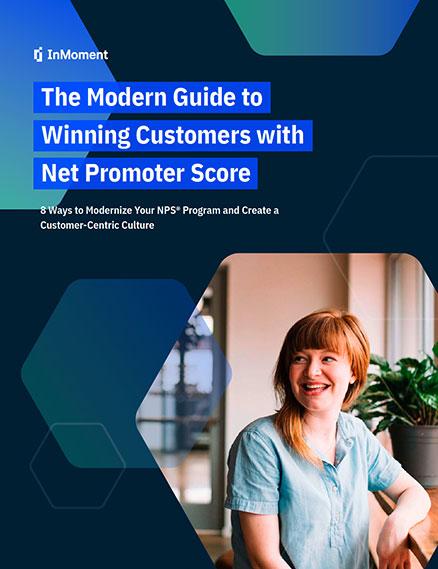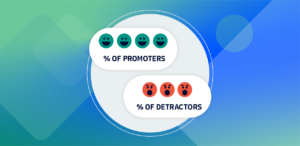With any business, you will deliver some experiences that make customers happy and some that do not. Those customers that aren’t satisfied are basically why customer experience programs exist—how can we improve the experience for those unhappy folks (otherwise known as detractors)?
Pearl-Plaza specialises in Experience Improvement (XI): with our decades of human expertise and leading-edge technology, we help companies improve experiences so that the needs of employees, customers, and businesses are all met. But first it’s important to learn who these unhappy customers are, why they matter, and what you should do about it.
What Are Promoters and Detractors?
In the customer experience (CX) world, businesses use a metric called Net Promoter Score (NPS) to measure how likely, on a scale of 0-10, a customer is to recommend a product or service to a friend. Customers are categorised based on the score they give.
- Promoters (9 or 10): Customers who are loyal and passionate about the experiences they’ve had
- Passives (7 or 8): Customers who are satisfied but not necessarily as enthusiastic as promoters
- Detractors (0-6): Customers who had negative experiences and are unlikely to buy from your brand again
Why Do Detractors Matter?
- Detractors Negatively Affect Your Return on Investment (ROI)
Losing customers is a big deal. It’s 5 to 25 times more expensive to gain a new customer than to retain a loyal one. That’s why customer retention and churn is so important. You don’t want customers coming to your store once, leaving satisfied, and never coming back again. To maximise ROI, you need customers coming back and back again. So every detractor your NPS survey detects is likely another customer who won’t return to your business.
- Detractors Ruin Your Brand Image
Customers who have negative experiences are more likely to write a review of your business versus customers who have positive ones. A bad review is not the end of it either. How many times have you told a friend about a bad experience you had? That the server was rude or the product wasn’t working correctly? We rarely share if our experience was good or okay, but once it turns sour we’re ready to make our dissatisfaction heard. As customers, we don’t obsessively track if an experience goes well because that’s how we expect our experiences to be, seamless. But let it be known if an airline messes up your flight or your Wi-Fi is always spotty.
- Detractors Make Your Competition Look Better
Once customers have a bad experience with one brand, they’ll seek out alternatives for the product or services they need. Fries at Burger King were cold? Well, maybe it’s time to switch to McDonald’s or Wendy’s. In fact, 51% of B2B customers won’t return to your brand for up to two years if they experience poor customer service. What’s key here is that the competition doesn’t magically change or improve anything in the time it takes a customer to switch brands. A negative experience is all the persuasion a customer needs to look for other options. By looking worse, everyone else shines brighter.

GUIDE
The Modern Guide to Winning Customers with Net Promoter Score
8 ways to modernise your NPS program and create a culture of customer happiness.
How To Turn Detractors Into Promoters
- Make Giving Feedback Accessible and Convenient
The first step is knowing what exactly detractors are having a problem with, which means collecting valuable feedback. It’s helpful to have an omnichannel approach to customer feedback. Provide several avenues for customers to give feedback throughout the customer journey, which could look like pop-up microsurvey when they visit your website or an email survey after they’ve made a visit to your business. Since you can’t force customers to give you feedback, the main goal is to make it as easy for them as possible.
- Adopt a Case Management Program
To streamline customer issues, it’s extremely helpful to have a case management program. This ensures that all cases are being followed up on, your customer support team knows who is taking care of which customers, and cases are resolved on a short timeline. Turning a negative experience into a positive one can change a customer’s mind and save your company from losing ROI.
- Close the Customer Feedback Loop
It’s not enough to solve a customer’s problem. You need to do two things: evaluate whether the issue is a system-wide fault and update the customer on what your business is doing to prevent further similar situations. If multiple customers are having the same problem, it’s likely that you need to double-check how you’re operating as an organisation. And it’s always beneficial to send your customer base follow-up emails or texts on a regular basis about how things are improving. How else will they know if real change is happening?
How Pearl-Plaza Can Help You
So now we’ve gone through the ins and outs of detractors and why they’re crucial to pay attention to in your CX program. Converting your detractors to promoters is a difficult task—especially when doing it alone. This is why we at Pearl-Plaza invite you to collaborate with us so that you can achieve your CX dreams. Fill out the below form to get a personalised demo with one of our very own experts!

See ROI in Half the Time
Pearl-Plaza’s integrated CX approach increases customer lifetime value and bottom line performance in just 12 months, significantly faster than the industry average of 25 months!



